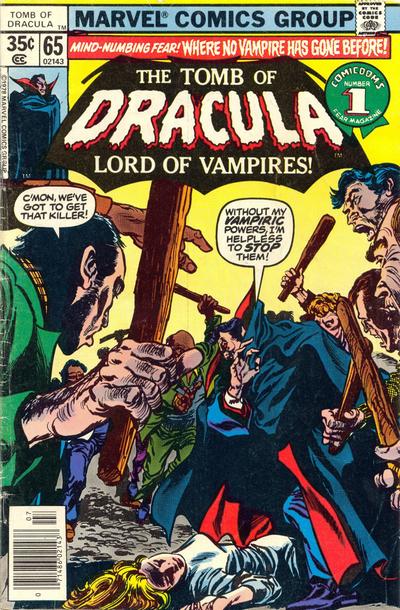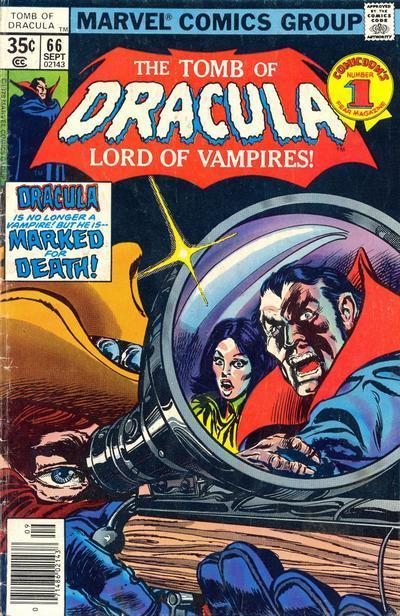I’m a fan of books aimed at writers, and I’m always delighted to find another good one.
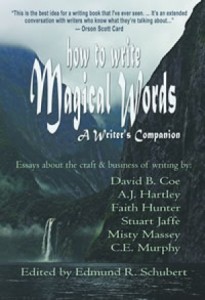 How to Write Magical Words: A Writer’s Companion debuted in January 2011. Unlike most “how to write” books that I’ve ever seen, Magical Words is presented in bite-size chunks. The authors take turns writing about various topics, presenting short essays with information, advice, and helpful anecdotes, then get out of the way for the next essay. None of which are more than four or five pages long. It’s an ideal approach for someone working in this busy modern world, or for someone under deadline, or with kids, or who wants to read a little something before sitting down to write for the day, and editor Edmund Schubert is to be commended for the structure.
How to Write Magical Words: A Writer’s Companion debuted in January 2011. Unlike most “how to write” books that I’ve ever seen, Magical Words is presented in bite-size chunks. The authors take turns writing about various topics, presenting short essays with information, advice, and helpful anecdotes, then get out of the way for the next essay. None of which are more than four or five pages long. It’s an ideal approach for someone working in this busy modern world, or for someone under deadline, or with kids, or who wants to read a little something before sitting down to write for the day, and editor Edmund Schubert is to be commended for the structure.
The book is broadly divided into seven categories, like “Characters, Dialogue, & Point of View” or “Self-Editing,” into which each of the short essays is placed. Perhaps because the material originated on the web site magicalwords.net there’s an approachable, conversational quality to the advice — indeed, the contributing writers often react and expand upon the advice in the concluding remarks to each essay. As I read my way through the book I found myself looking more and more forward to seeing what the other writers would add, and what alternative perspective they might be able to offer. It was a lot like listening to a group of helpful professional writers as they trade tips among themselves — one has the sense that they are not so much talking at you as talking in a group in which you yourself would be welcome to drop in and ask for a few tips.
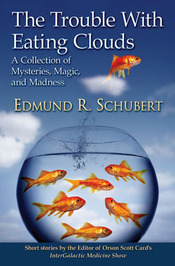 While there are certainly tips inside for all levels of writers, I think it will probably be of most use to aspiring writers or those who are just getting their career going (and this does seem to be the intent of the magicalwords.net site). I was impressed enough with the book’s structure that I’ve decided to look further into the work of Mr. Schubert. I’ve had the pleasure of talking with him at a convention or two over the years, and I’ve read a few stories during his tenure as Editor of Orson Scott Card’s Intergalactic Medicine Show, but this is my first extended exposure to what he’s capable of, and it’s made me curious about his recently released book of short stories, The Trouble with Eating Clouds. Anyone who can offer advice on writing this polished clearly knows something about writing, so I’ll be taking a look at his work soon, along with that of the other writers in the volume, David B. Coe, A.J. Hartley, Faith Hunter, Stuart Jaffe, Misty Massey, and C.E. Murphy.
While there are certainly tips inside for all levels of writers, I think it will probably be of most use to aspiring writers or those who are just getting their career going (and this does seem to be the intent of the magicalwords.net site). I was impressed enough with the book’s structure that I’ve decided to look further into the work of Mr. Schubert. I’ve had the pleasure of talking with him at a convention or two over the years, and I’ve read a few stories during his tenure as Editor of Orson Scott Card’s Intergalactic Medicine Show, but this is my first extended exposure to what he’s capable of, and it’s made me curious about his recently released book of short stories, The Trouble with Eating Clouds. Anyone who can offer advice on writing this polished clearly knows something about writing, so I’ll be taking a look at his work soon, along with that of the other writers in the volume, David B. Coe, A.J. Hartley, Faith Hunter, Stuart Jaffe, Misty Massey, and C.E. Murphy.
Moreover, I think I’ll definitely be dropping by magicalwords.net in the near future. They seem like a friendly bunch, and I’d like to join the conversation. Maybe I’ll “see” you there.
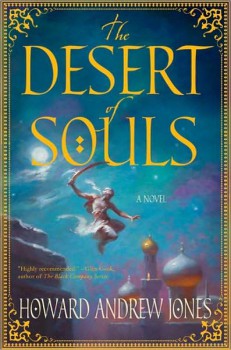 Sohaib Awan at Fictional Frontiers interviews Black Gate Managing Editor Howard Andrew Jones on his first novel The Desert of Souls, non-Western fantasy, juggling modern expectations in historical fiction, and much more:
Sohaib Awan at Fictional Frontiers interviews Black Gate Managing Editor Howard Andrew Jones on his first novel The Desert of Souls, non-Western fantasy, juggling modern expectations in historical fiction, and much more: I’ve refrained from talking about Conan the Barbarian (2011) until now, despite my love for Robert E. Howard’s works. But now that we’re poised on the eve of its U.S. release, I thought I’d weigh in with my personal hopes—and fears—regarding the film.
I’ve refrained from talking about Conan the Barbarian (2011) until now, despite my love for Robert E. Howard’s works. But now that we’re poised on the eve of its U.S. release, I thought I’d weigh in with my personal hopes—and fears—regarding the film.

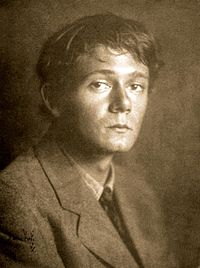 Sunday was the fiftieth anniversary of the death of Clark Ashton Smith. We morbid fans of a writer with a delectable taste for morbidity love to celebrate death anniversaries as much as birth ones, and the seduction of the half-century mark is too great to dismiss.
Sunday was the fiftieth anniversary of the death of Clark Ashton Smith. We morbid fans of a writer with a delectable taste for morbidity love to celebrate death anniversaries as much as birth ones, and the seduction of the half-century mark is too great to dismiss. Fantasy fiction is very often set either in the European Middle Ages, or in lands that are intentionally highly reminiscent of the Middle Ages in terms of technology and social structure. It is true that the use of European medieval settings is less common now than it has been, and also true that there have always been counter-examples. But it seems that much fantasy still relies on the European Middle Ages to define itself, one way or another. Sadly, one often has a sense that these backgrounds are not wholly thought-through; not realised as completely as they might be. The setting in a lot of fantasy, particularly I think in commercial fantasy fiction, seems to be a very generic Middle Ages in which medieval stereotypes mix with unexamined modern assumptions.
Fantasy fiction is very often set either in the European Middle Ages, or in lands that are intentionally highly reminiscent of the Middle Ages in terms of technology and social structure. It is true that the use of European medieval settings is less common now than it has been, and also true that there have always been counter-examples. But it seems that much fantasy still relies on the European Middle Ages to define itself, one way or another. Sadly, one often has a sense that these backgrounds are not wholly thought-through; not realised as completely as they might be. The setting in a lot of fantasy, particularly I think in commercial fantasy fiction, seems to be a very generic Middle Ages in which medieval stereotypes mix with unexamined modern assumptions.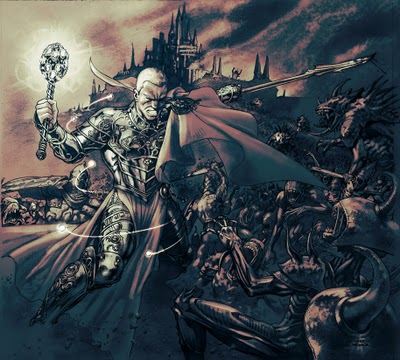


 NPR has posted its
NPR has posted its 